If you're like most homeowners, the appearance of your house is important to you. An attractive exterior can be a source of pride and increase the value of your home. Wood siding is one of the most popular home exteriors -- so you may be wondering what it would cost to replace your old siding with new wood siding. We've done the research, and we have the answers for you!
The nationwide price range for wood siding, including installation, is $6.50 to $12.00 per square foot. The average cost to put wood siding on a 1,500-square-foot house is about $17,500. Below, we break down the average cost, including installation, of the seven types of wood siding commonly used in the United States:
- Pine, fir, and spruce: $6.00 - $10.00 per square foot
- Cypress, cedar, and redwood: $6.50 - $12.00 per square foot
- Engineered wood: $3.00 - $8.00 per square foot
Several major factors -- including location, budget, and style -- determine the exact price you pay for wood siding within these ranges. We'll address all those issues below, discuss the pros and cons of each type of wood, and reveal how you can add value to your home by installing new siding. Keep reading! 4

What Determines The Cost Of New Wood Siding?
The durability of a species of wood affects its average cost. For example, cedar, cypress, and redwood are highly resistant to rot and insects, so they cost more than pine, spruce, or fir. The location also matters: some species exist only in certain regions of the country, and transporting their lumber can be expensive. Quality and style also affect the bottom line of your siding project.
Type Of Wood
Pine
Pine is a common and inexpensive wood siding, excellent for both painting and staining. Because pine tends toward knottiness, it is difficult to find long blemish-free boards, and the need to use shorter boards can add to the total cost of installation. You can expect to pay $6.00 - $10.00 per square foot for pine siding and installation.
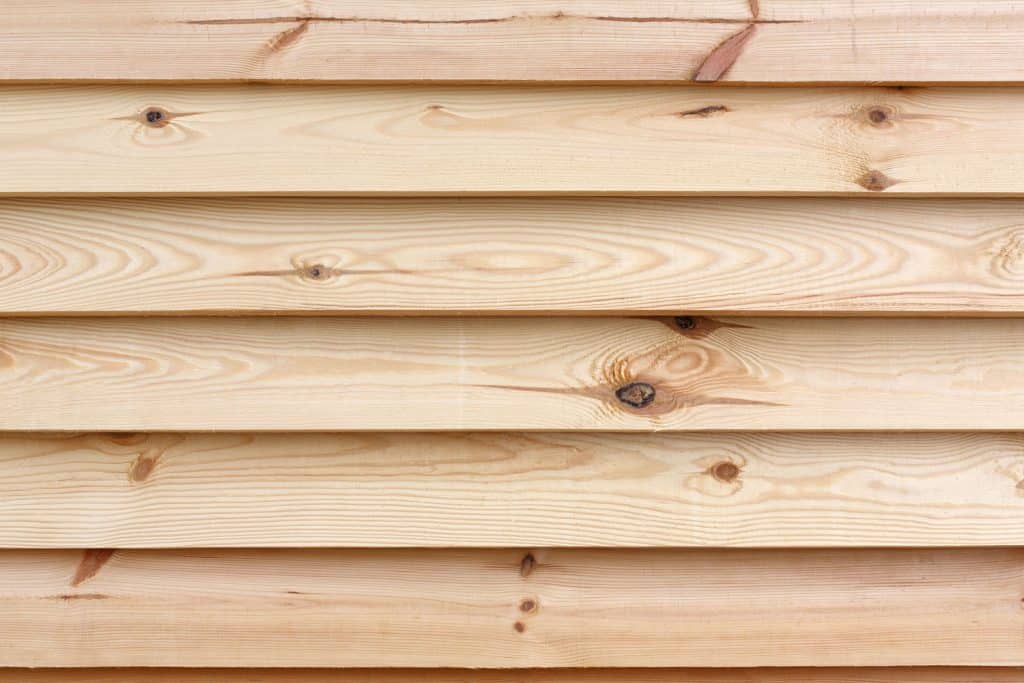
Pine siding typically has some knots and blemishes.
As a coniferous tree that regrows quickly, pine is a sustainable choice for siding. However, avoid using "fast-growth" pine lumber, which is susceptible to splitting, cupping, and warping.
We may include affiliate links and curated AI content to highlight top design styles.
Click here for shiplap pine siding on Amazon.
Spruce
On the East Coast, spruce often replaces pine. It shares most of the benefits and drawbacks of pine: it is low-cost, accepts stains and paints well, and tends to be available only in relatively short board lengths. Spruce siding comes in a wider range of quality options than pine. Its price ranges from $6.00 - $10.00 per square foot for siding and installation.
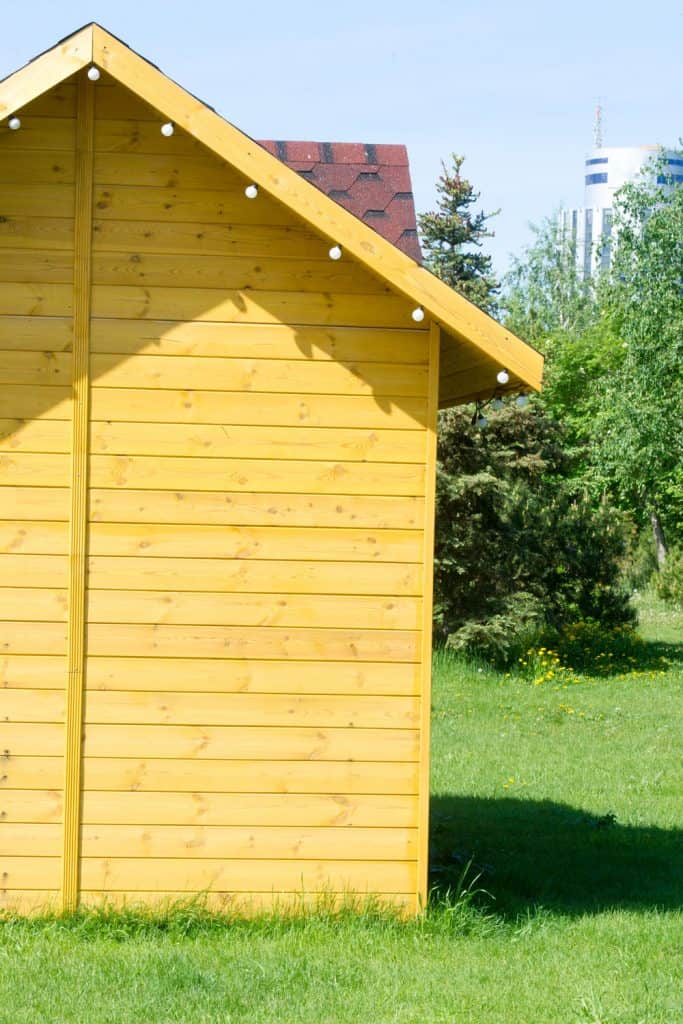
Newly installed spruce siding
Fir
Fir often substitutes for pine on West Coast houses. Like pine and spruce, fir is excellent for painting or staining; unlike them, it has a uniform, even grain, so it can be cut into long boards without sacrificing quality. Fir can easily be milled into a variety of siding styles -- including clapboard, board-and-batten, and tongue-and-groove -- making it a versatile choice, as well as an affordable one. Fir siding costs $6.00 - $10.00 per square foot.
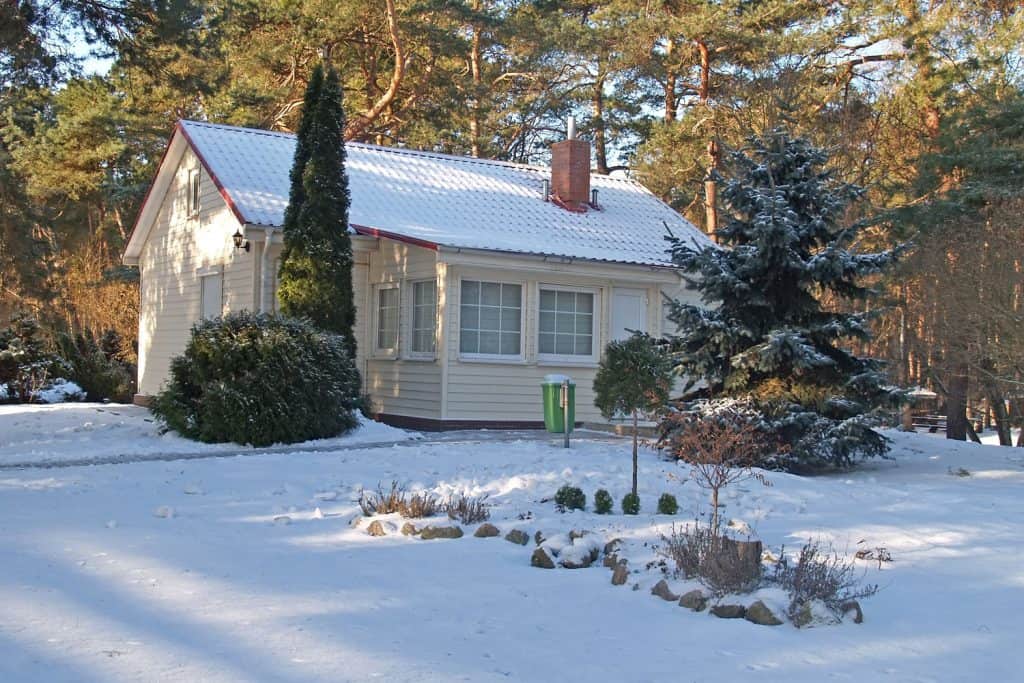
One disadvantage of fir is its tendency to warp when exposed to moisture. Careful maintenance and regular re-sealing are critically important to keeping fir siding in optimum condition.
Cedar
Nothing matches the cedar's nostalgic beauty, whether it's stained, sealed with a clear coat, or left to weather naturally. Cedar siding has a smooth, even grain and, due to its low pitch and resin levels, is ideal for staining. Cedar is also resistant to rot, mold, moisture, and insects. With proper maintenance and regular re-sealing, it can last up to 50 years.

Cedar siding comes in a variety of styles, including:
- shakes
- shingles
- clapboard
- board-and-batten
- tongue-and-groove
Shingles and shakes are up to 30% more expensive than other cedar siding styles, but despite their cost, they are prized for the rustic look they add to a home. Similarly, long boards of top-quality heartwood are costly but highly sought-after for their beauty. You can expect to pay $6.50 or more per square foot for lower-quality cedar and up to $12.00 per square foot for the highest quality shakes and long heartwood boards.
Click here for beautiful heartwood cedar shingles on Amazon.
Cypress
Cypress, durable and lightweight, is native to the Southeast and the Gulf Coast. Old cypress siding is often salvaged during demolition and installed on new or existing homes. However, there is currently little new harvesting of cypress for lumber because the difficulty of milling it makes it prohibitively expensive.
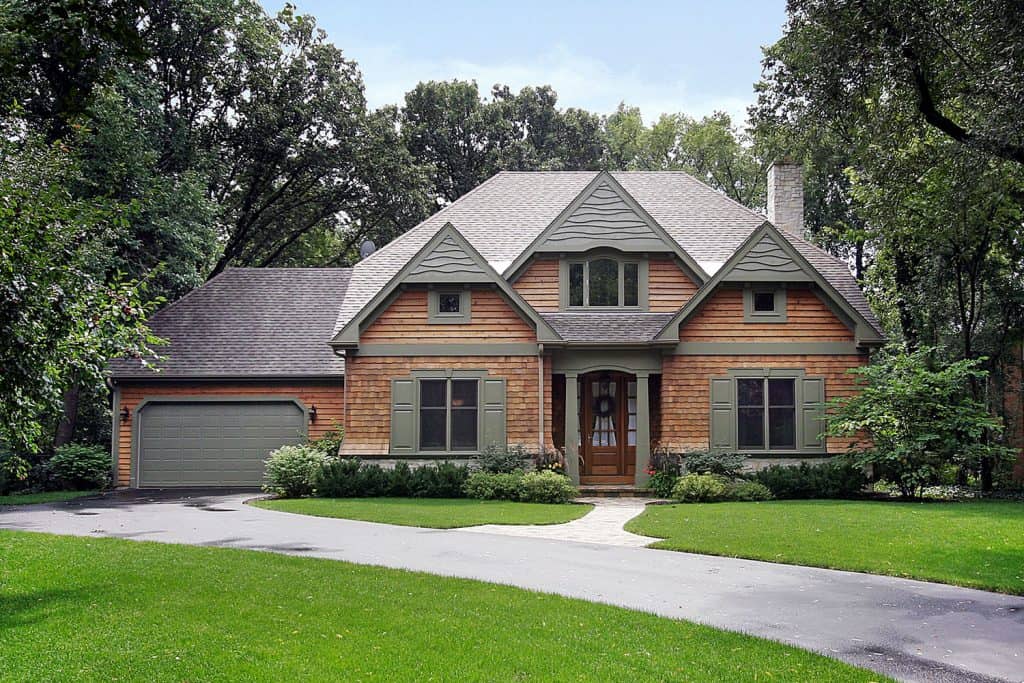
Cypress is resistant to moisture, rot, and insects; however, it must be carefully maintained and re-sealed every three to five years like all wood siding. If properly cared for, it can last for up to 50 years. Cypress siding, installed, costs $6.50 - $12.00 per square foot.
Redwood
Famed for its rich tone and beautiful grain, redwood is prized for attractiveness and durability. It is native to the West Coast and is rarely found on homes in other parts of the country. Like cedar and cypress, redwood's low concentrations of resin and pitch make it ideal for staining. On the West Coast, you can expect to pay $6.50 - $12.00 per square foot; in other parts of the country, you will pay substantially more due to the cost of transporting it.
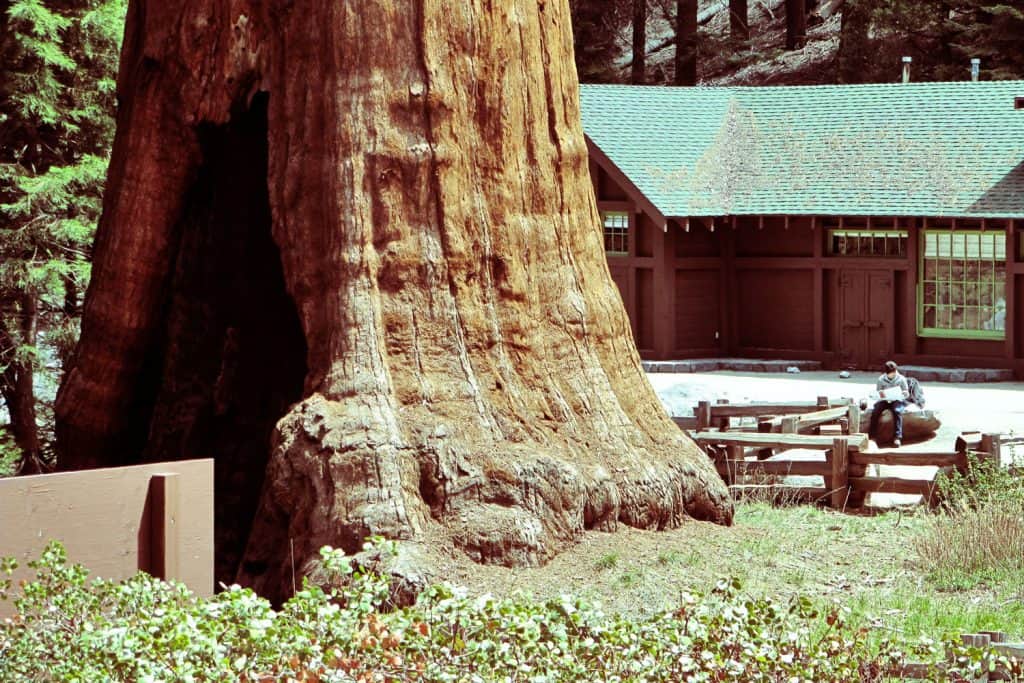
Engineered Wood
Engineered wood is created from sawdust and wood chips bonded with a special resin. It has many benefits over traditional wood siding: it is less expensive, strong and lightweight, and can last for several decades with little maintenance. Also, engineered wood has no knots or flaws, and it is easy to mill. It generally comes in panels milled to create the look of tongue-and-groove or clapboard siding.
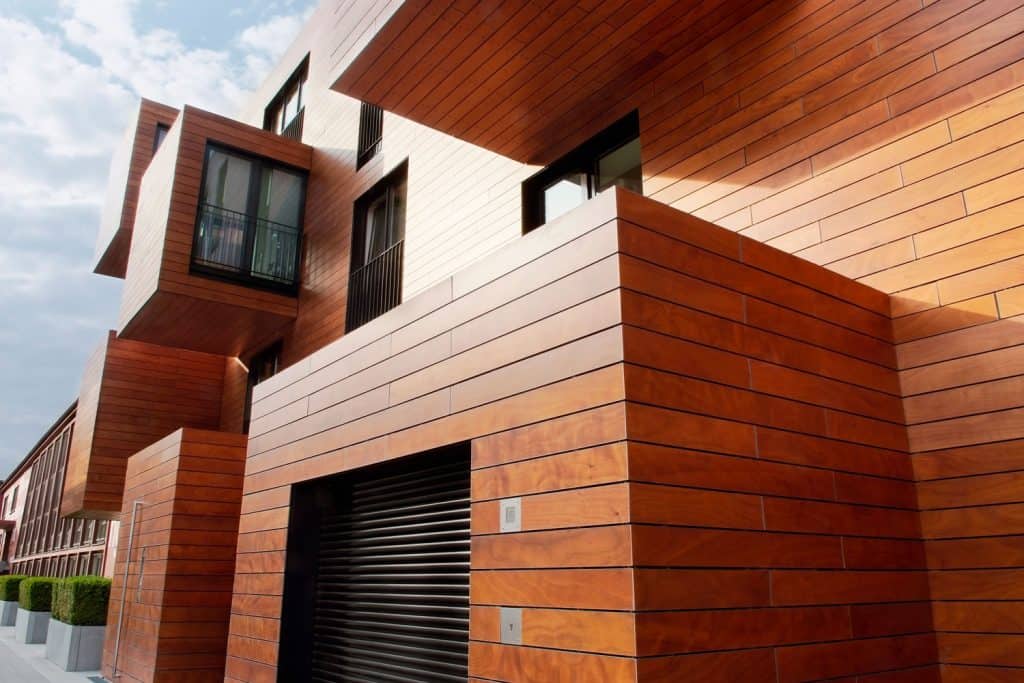
On the negative side, many homeowners find the appearance of engineered wood to be "too perfect," lacking the charm and authenticity of traditional wood siding. Engineered wood is also infused with various chemical compounds to enhance its resistance to fire, moisture, and insects, raising concerns about long-term exposure to potential toxins. It is available in all parts of the country and typically costs $3.00 - $8.00 per square foot, installed.
Location
The geographic location of your home may influence the type of wood available and its cost. For example, redwood and fir are native to the West Coast and are commonly found on houses there. Although there is a demand for redwood in other parts of the country, the expense of transporting it puts it out of reach for most homeowners. Similarly, cypress siding is limited to homes in the Southeast and Gulf Coast and rarely found elsewhere. Spruce is widely used in the Northeast; cedar, pine, and engineered wood are available throughout the country.
Budget
After you decide which species of wood you prefer, your budget will likely determine the siding quality you can purchase. Manufacturers grade each board by its appearance. Higher-quality boards, which contain more heartwood and fewer blemishes, are labeled "premium"; those with more blemishes are labeled "knotty." Of course, you get what you pay for: premium boards can cost substantially more than knotty ones.
Style
The style of your new wood siding is the final major factor in determining its cost. Certain styles cost more because they require more complex milling; others have higher-than-average installation costs. Below, we describe the most common styles of wood siding.
Clapboard
Clapboard (also known as "lap") is the most common, traditional style of siding. Each board is wedge-shaped, with the top thinner than the bottom. The siding is installed horizontally, with the thicker bottom section overlapping the thinner top section of the board below it. This arrangement ensures that water rolls off the siding rather than seeping in between the boards.
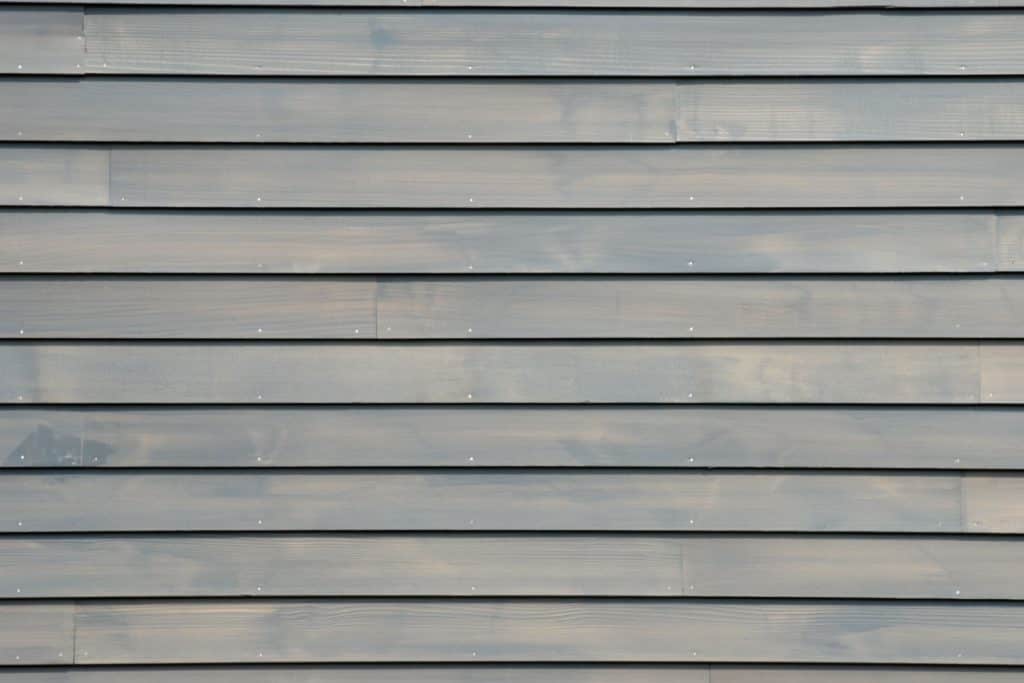
Board-and-Batten
Board-and-batten siding features wide (usually 1') boards installed side-by-side, with narrow strips (1/2-inch "battens") of the same wood nailed over the seams between the boards. This creates a rustic, informal look and adds a layered appearance to the exterior of the home. Board-and-batten is usually installed vertically, but it can also be placed horizontally or even diagonally.

Tongue-and-Groove
Tongue-and-groove style boards feature a protuberance (tongue) down one long end and a slot (groove) down the other. Each board's tongue fits into the slot of the board beside it, creating a strong joint and a flat surface. The cost of milling makes tongue-and-groove style siding more expensive than clapboard or board-and-batten. It is typically installed horizontally or diagonally.
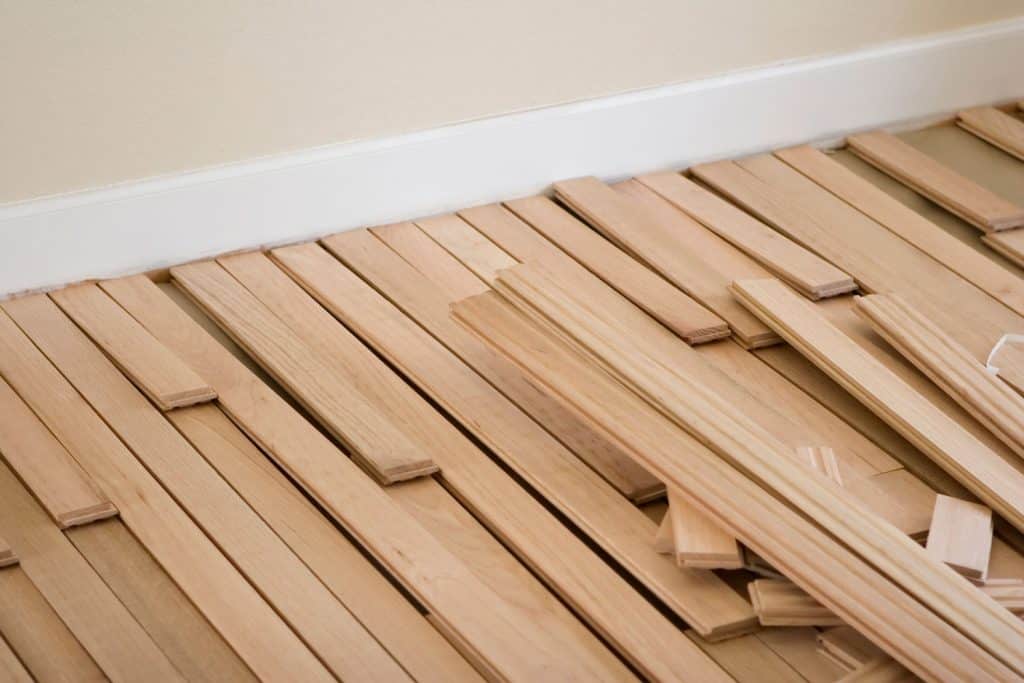
Shingles and Shakes
Shakes are thicker than shingles and are often hand-hewn, while shingles are typically factory-milled. The bottom edges can be straight, staggered, or even curved, offering a wide variety of looks for a home. Shingles and shakes are often used combined with clapboard or stone siding to set off gables or other exterior features of the home.

Cedar shakes and shingles are relatively expensive due to three factors: the wood itself is costly, the milling or hand-hewing is time-consuming, and each shingle must be installed individually, raising installation costs.
Log
The most expensive wood siding style is log siding because it requires top-quality, full-length pine or cedar logs at least 3" in diameter, which are difficult to find. These logs are cut in half and installed with the flat side facing inward and the rounded side exposed. Stained and sealed log siding makes a dramatic rustic statement.
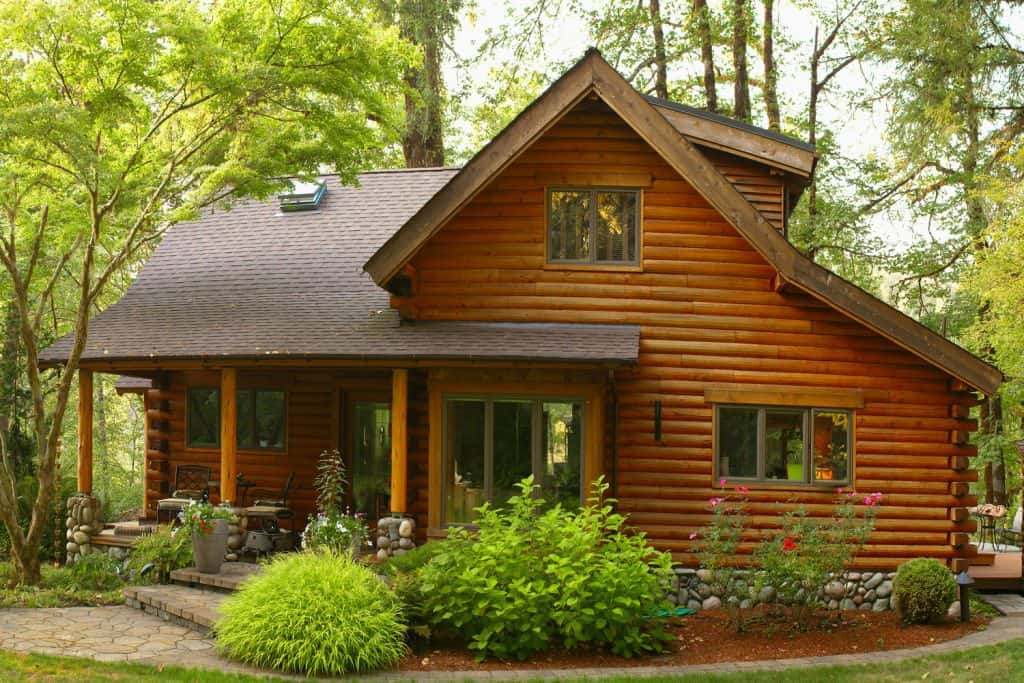
Does Siding Add Value To Your Home?
The type and condition of your home's siding are two of the most important factors affecting its resale value. Replacing old siding with a new, attractive look increases the speed of a home's sale and its ultimate selling price. Adding wood siding, especially cedar shingles/shakes, adds substantial value to your home. Other types of siding that significantly increase your home's value include stone, brick, and even high-quality vinyl.
What Color Siding Has The Best Resale Value?
The color of your home's siding affects its resale value. After all, it is the first thing people see, and first impressions are critical in the real estate market. In general, neutral colors are best: browns, grays, neutral greens, and even mid-tone blues. White is a "safe" color -- none of your potential buyers will hate it -- but lacks the appeal of the colors listed above.
Is New Siding A Good Investment?
Installing new siding is one of the best investments a homeowner can make. Wood siding produces an average 77% return on investment (ROI); cedar shingles/shakes average an 82% ROI. These figures are similar to the return on investment of stone or brick siding.
In Conclusion
If you wish to increase your home's attractiveness and value, installing wood siding is an excellent option. You can choose among various wood species, qualities, and styles to create the most appealing look for you and potential buyers. Wood siding provides a high return on investment and never goes out of style!
You may also enjoy:



![Get Your Roof Ready: How to Apply Aluminum Roof Coating [Step by Step Guide]](https://homedecorbliss.com/wp-content/uploads/2023/08/shutterstock_1624204837-600x400.jpg)
